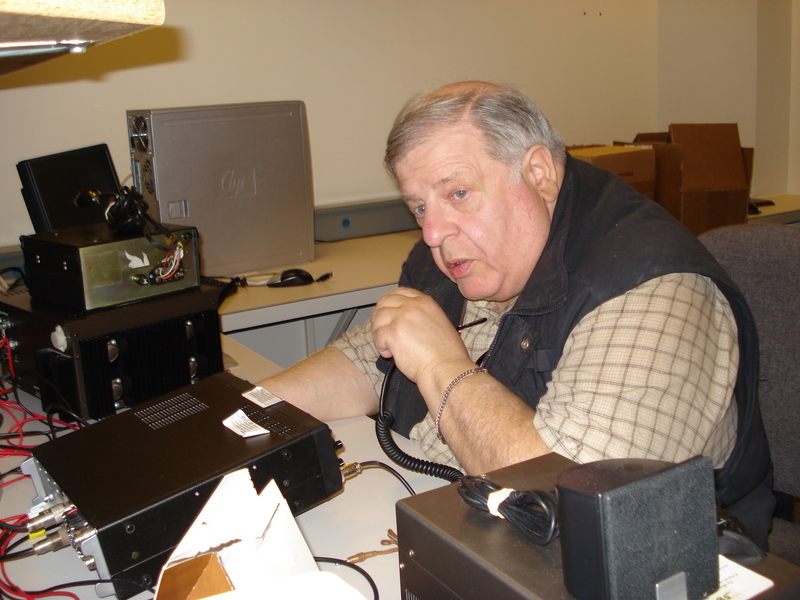Welcome to Handiham World!

The first order of business is the upcoming time change in November: Sunday, 1 November 2009, we move to standard time in the USA. The Handiham daily EchoLink net remains true to local time, so if you use local time to check in you will not notice any difference. However, if you use GMT, the net time appears to shift by 1 hour. Instead of beginning at 16:00 GMT, the net begins at 17:00 GMT. The first net affected by this change will be the Monday, 2 November EchoLink net.
For net managers, the time change means making sure that net control stations are aware of the plan to shift net times by one hour relative to Universal Time. The problem is certainly one for amateur radio nets that have worldwide participation, since different parts of the world may elect to follow a seasonal time shift. About 70 countries have at least some form of daylight saving time. Three notable exceptions are China, India, and Japan. A station checking in to the Handiham EchoLink net via the N0BVE repeater system in Minnesota would observe no difference next Monday, as the net would begin at what appears to that station to be normal local time, 11:00 in the morning. However, relative to GMT (which never shifts by the season), the net will now begin an hour later, at 17:00 hours GMT instead of 16:00 hours GMT.
An easy way to remember the difference is to know the "normal" number of hours between your local time and GMT. In Minnesota, where I live, the difference between local time and GMT is +6 hours. That means if the net is on at 11:00 hours in Minnesota, I add 6 hours to 11 hours and the total is 17:00 hours GMT. That is the same as 5:00 in the afternoon Universal Time.
In the summer, when Daylight Time is in effect, the difference between Minnesota time and GMT is only 5 hours.
So, to set forth a practical example, a station checking in from Japan will notice that the net now begins at 2:00 a.m. during the winter, when we shift to standard time. All summer, when Minnesota was on Daylight Time, that same station in Japan would see the net starting at 1:00 a.m., so you can see that it might be more difficult for Asian stations to keep the net schedule at such an inconvenient hour. We also get check ins from India, and since, like Japan, India does not shift times from Daylight to Standard, those stations will also observe that the net begins an hour later.
The Handiham Monday HF nets also remain true to local time, the only problem being whether or not we are even going to bother keeping these nets on the books, so to speak. The nets, other than the CW net, have fallen into disuse and might as well be abandoned. The relentless sunspot minimum with its poor band conditions has taken a toll on participation, and the RFI that prevented us from using our old station at Courage Center meant that we could not pick up the net if there was no other net control station available. We had a number of dedicated phone operators who stuck it out as long as they could on the 20 meter net, 14.265 MHz, but when stations just don't show up, there really isn't much of a net. A perennial problem with the 14.265 frequency is that the Salvation Army Net backs up against our net time and does not always change with the season.
It is time to decide what to do with these HF nets. The CW net stays in place on 40 meters, but the HF phone nets need a complete re-thinking. Let's hear your ideas, now that the sun is again showing signs of life and solar cycle 24 will begin bringing us better HF band conditions. Oh, and let's not assume that all the activity will be on 14 MHz and above. Maybe you would like to have a 75 meter net, or perhaps a 160 meter net, either of which would allow for fairly wide geographic coverage during the upcoming northern hemisphere winter. While nets are normally discouraged on 17 meters, we used to have an informal gathering on that band during cycle 23, when the band was open often. Alan, K2WS, started that "informal non-net get-together". When band conditions became so bad that we just couldn't keep the 17 meter non-net going, it simply died out. Maybe conditions will improve and we can get together informally on that band, or perhaps have a more formal net on a higher frequency band like 10 or 15 meters.
Think of the advantages of a 10 meter net:
-
Novices and Technicians can operate SSB phone between 28.3 and 28.5 MHz.
-
A quarter wave vertical antenna for the 10 meter band is only about eight and a quarter feet (2.5 meters) long. It is much easier to fit a 10 meter band antenna into a apartment or condo living situation than it is to fit a 20 meter antenna into that same space.
-
Band conditions will soon favor 10 meters with the solar cycle producing higher sunspot numbers. That means that smaller antenna systems and lower transmitter power will become practical for working HF again.
-
There is a lot of spectrum space on the 10 meter band. It is not crowded with stations as the 20 meter band is.
-
Modern multiband rigs cover the 10 meter band, so many of us already have the equipment we need.
-
The Handiham Remote Base station at Courage North operates on the 10 meter band, offering another way to get on the air.
Look, all I'm asking is that we mull this idea over and think about the HF nets. I hate to drop the 20 meter net altogether, but 14.265 MHz is just a very crowded frequency. We could consider running the net in a less crowded part of the band, but that would mean moving to the Advanced or Extra portions of 20 meters. Do you have any ideas about that? Perhaps it would offer even more incentive for some of our Generals to upgrade, but even if they don't want to upgrade, there would be other nets that they could join on bands like 10 meters.
I guess we have to admit that every station is not going to be able to get on every net. The secret to building a successful on the air community is to have enough choices, alternatives that serve as many Handiham members as possible.
For Handiham World, I'm...
Patrick Tice, wa0tda@arrl.net
Handiham Manager

